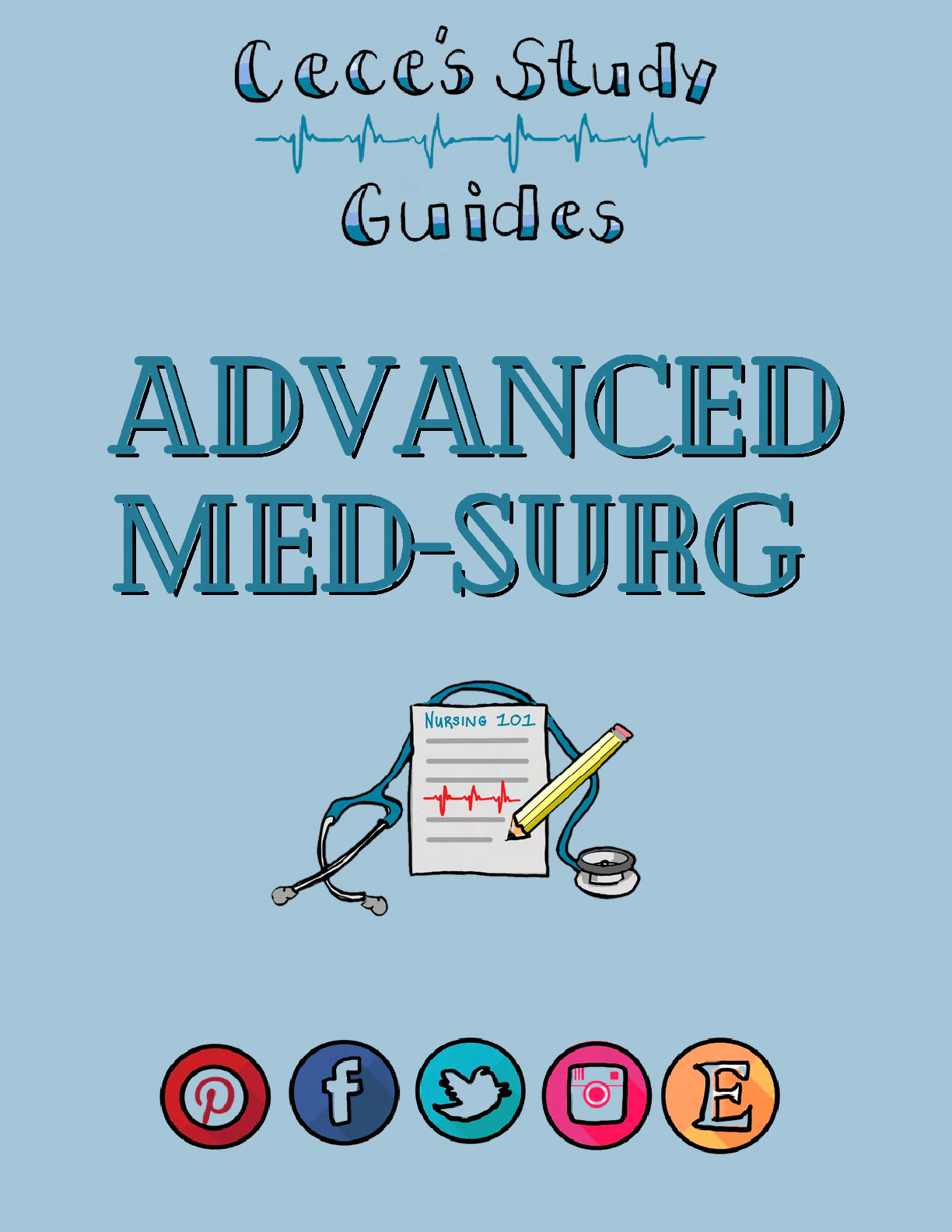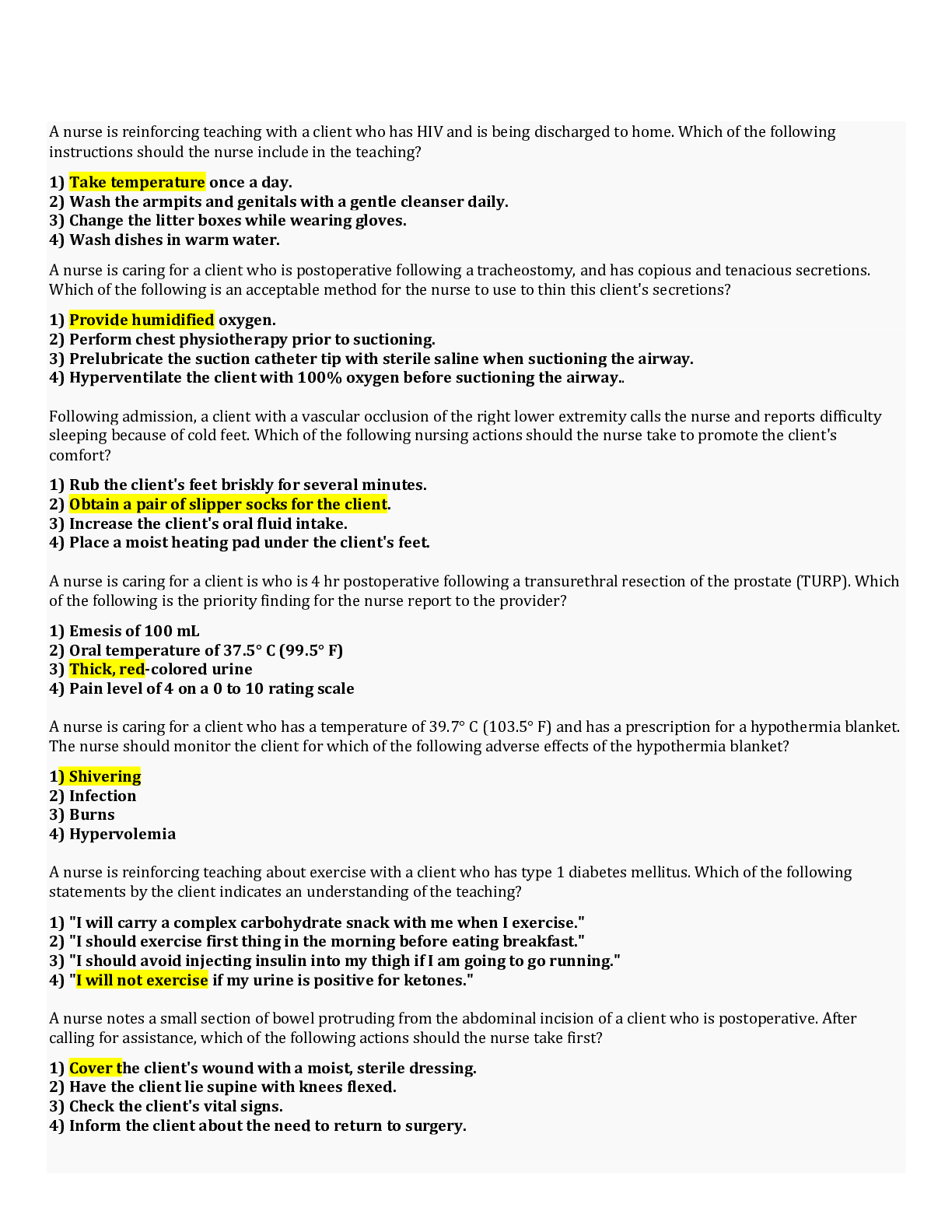*NURSING > STUDY GUIDE > Auburn University, Montgomery - NURSING 3240 Endocrine Study guide(1). (All)
Auburn University, Montgomery - NURSING 3240 Endocrine Study guide(1).
Document Content and Description Below
Endocrine Study guide(1). Skin cancer-define, risk factors, signs and symptoms, medical management, nursing management Skin assessment • Asymmetrical • Border Irregularity • Color Changes ... • Diameter < 6mm • Evolving Appearance Prevention strategies • Avoid environmental hazards (prolonged sun exposure, radiation, irritants or allergens, proper hygiene and nutrition, and self examination. Basal cell: most common type of skin cancer and least deadly. Squamous cell: potential for metastasize. Pipe, cigar, and cigarette smoking. Malignant melanoma – define, risk factors, signs and symptoms, medical management, nursing management • Cause unknown: environmental factors, genetic factors. • S/S: ABCDE Rule o asymmetry o border irregularity o color change o diameter >6mm o evolving in appearance • Risk factors: o red or blond hair o light colored eyes o fair skin that freckles o chronic sun exposure o family history • Tumor staging: o O-IV o Tumor size o Nodal involvement o Metastasis o T-N-M • Diagnosis/Collaborative Therapy o topical therapy o phototherapy o radiation therapy o laser therapy o drug therapy • Diagnostic/Surgical Therapy o skin scraping o electrodesiccation o electrocoagulation o curettage: scraping o punch biopsy: extraction of tissue for pathologist to view to diagnose pt o cryosurgery: liquid nitrogen used to destroy unwanted tissue o excision - Mohs procedure: most effective for BCC and SCC, taken off little by little till normal cells found • Nursing Management o ambulatory and home care o wet dressings o baths o topical medications o control of pruritus o lichenification (skin becomes thick and leathery due to constant itching) o prevention of spread o prevention of secondary infections o specific skin care Mohs procedure: during Mohs surgery, thin layers of cancer containing skin are progressively removed and examined until only cancer free tissue remains. Also known as micrographic surgery. Burns- Types- define, describe damage to tissue, assessment, emergent care and management, nursing management • Thermal: exposure to flame, hot object/surface, or scalding (stove top, grease, bathtub, hot water) • Chemical: exposure to acid, alkali, or organic substance (gasoline, household cleaners, garden products.) • Electrical: electrical energy converted into heat (power cords, power tools, lightening) Burn classification- describe and define 1 degree: (superficial thickness) sunburn, low intensity flash, superficial scald. Least damage; epidermis is only part of the skin damaged. Erythematous, but epidermis is intact; may blister. Peeling of dead skin may occur in 2 to 3 days after burn. 2 degree: (partial thickness) scalds, flash flame, contact. Involves entire epidermis and dermis in varying depths. Painful and typically associated with blister formations; hair follicles and skin appendages remain intact. Healing time depends on depth of injury and usually ranges from 2-3 weeks. 3 degree: (full thickness) flame, prolonged exposure to hot liquids, electric current, chemical, contact. Destruction of entire epidermis and dermis and sometimes destruction of underlying tissues. Edema; wound color ranges from pale white to red, brown, or charred; burned area lacks sensation because nerve fibers damaged; leathery appearance; hair follicles and sweat glands destroyed. Skin does not regrow. 4 degree: (deep full-thickness) deep burn necrosis. Extends into the fat, fascia, muscle, and/or bone. Prolonged exposure or high voltage electrical injury. Would appears charred; burn shock; myoglobinuria (presence of myoglobin in the urine, usually associated with rhabdo or muscle destruction). Amputations likely; grafting as no benefit. Rule of nines- the rule of 9s assesses the % of burn and is used to help guide treatment decisions including fluid resuscitation and becomes part of the guidelines to determine transfer to a burn unit. You can estimate body surface area on an adult that has been burned by using multiples of 9. Smoke and inhalation injury- signs and symptom, assessments, treatments, complications • Caused by components of smoke, heat particules, systemic toxins. • Mechanisms of injury is thermal damage, asphyxiation, and irritation of the pulmonary tissue. • S/S:injury occurring in an enclosed space; burns of the face or neck, singed nasal hair; hoarseness, high-pitched voice change, stridor; soot in sputum; dyspnea or tachypnea and other signs of reduced oxygen levels; erythema and blistering of the oral or pharyngeal mucosa. • Upper and lower airway injuries result in edema. • Pulmonary deterioration by be delayed as long as 24-36 hours Emergent phase- define, time frame, assessments, medical management, nursing management • Severity of Injury: o Determination of depth: how the injury occurred, causative agent, temperature, duration of contact with causative agent, and thickness of the skin. o Temperatures ≥ 54°C (130°F) for 30 seconds will results in burn injury o Temperatures ≥ 60°C (140°F) tissues destruction occurs in 5 seconds o Temperatures ≥ 71°C (160°F) a full thickness burn occurs instantaneously o Burns that exceed ⅓ of the TBSA are considered major burn injuries o Consider age of the patient o Secondary injuries • Burn injuries that should be referred to a burn center include: o partial thickness burns greater than 10% TBSA o burns that involve the face, hands, feet, genitalia, perineum or major joints o electrical burns including lightning injury o third degree burns of any age group o chemical burns o inhalation injury • Medical management: o STABILIZATION o airway, breathing, circulation o fluid resuscitation o assessment of secondary injuries o removed all clothing and jewelry o contact lenses? removal o monitor temp o validate history of injury o indwelling catheter o Burns > 20% TBSA need NGT to LIS o Tetanus prophylaxis if not given within last 5 years • Nursing management: o stabilization of airway, breathing, and circulation o cardiac monitoring pulse assessment; BP o large-bore IVs (14 to 18 gauge) o hourly assessment of intake and output o infusion pumps for IVF o elevation of burned extremities above the heart o indwelling catheter o pain management o documentation Fluid therapy- using the Parkland formula – (4 ml formula) • Adults with electrical burns o 4mL LR x patients weight in Kg x %TBSA burned = amount of fluid resuscitation used within first 24 hours Potential complications • Fluid and electrolyte shifts • Cardiovascular problems • Respiratory problems • Immune Drugs used- (pain meds) opioids, NSAIDS, anxiolytics and anesthetic agents. Drug of choice: Morphine Nutrition therapy Endocrine Study guide 2 types of glands- exocrine and endocrine (each does what?) • Endocrine glands - include the hypothalamus, thyroid, parathyroid, adrenals, pancreas, ovaries, testes, and pineal gland. The glands secrete hormones which play a role in [Show More]
Last updated: 1 year ago
Preview 1 out of 30 pages
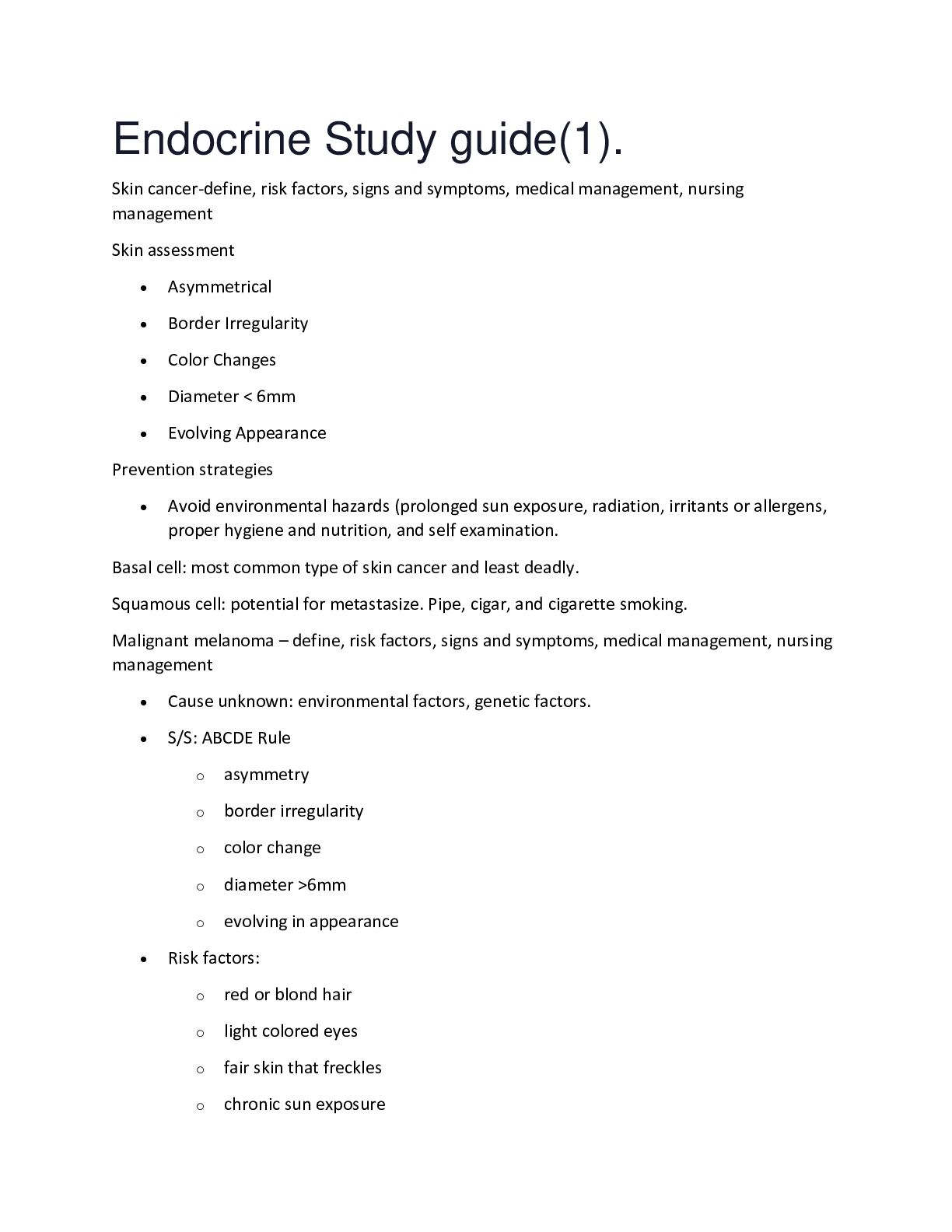
Reviews( 0 )
Document information
Connected school, study & course
About the document
Uploaded On
Dec 31, 2020
Number of pages
30
Written in
Additional information
This document has been written for:
Uploaded
Dec 31, 2020
Downloads
0
Views
38


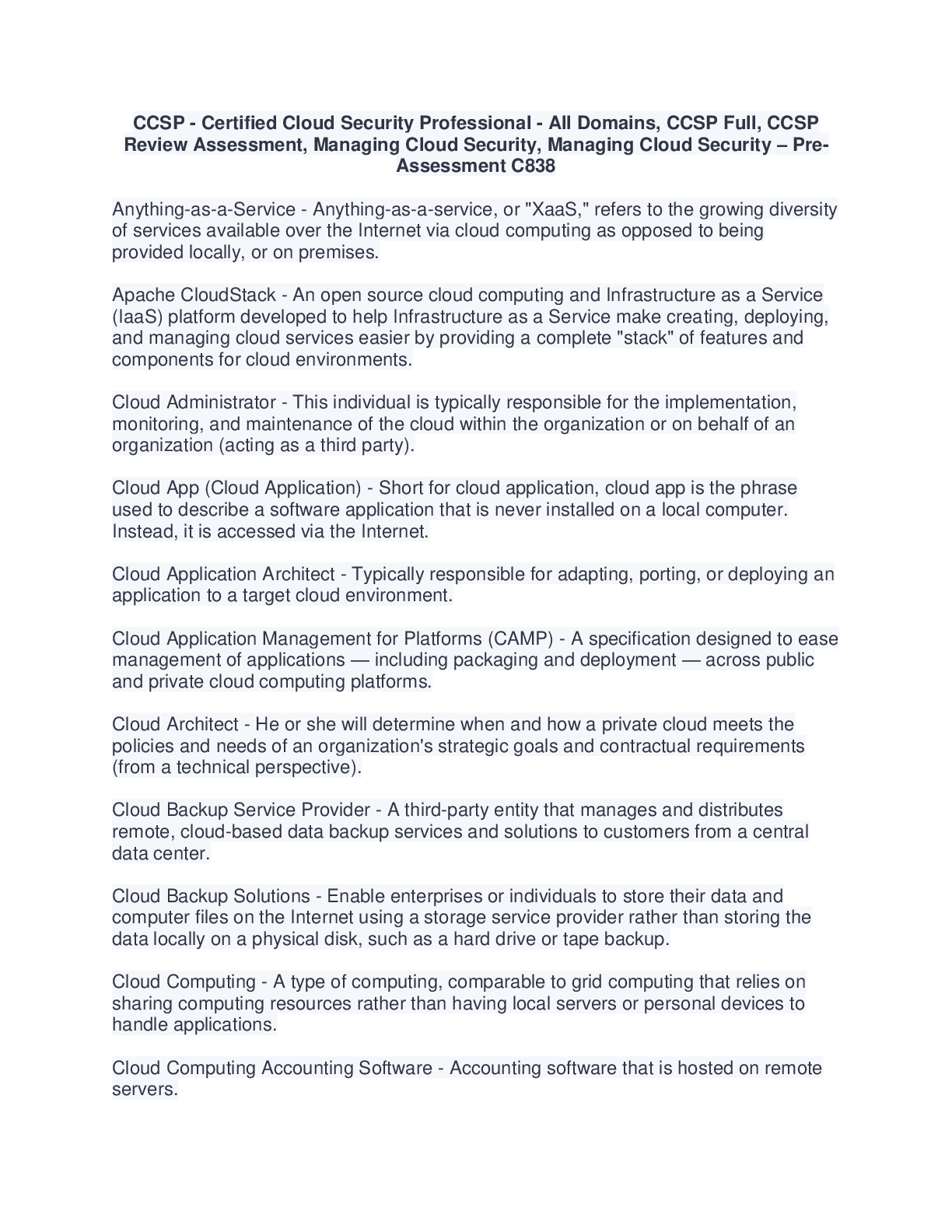
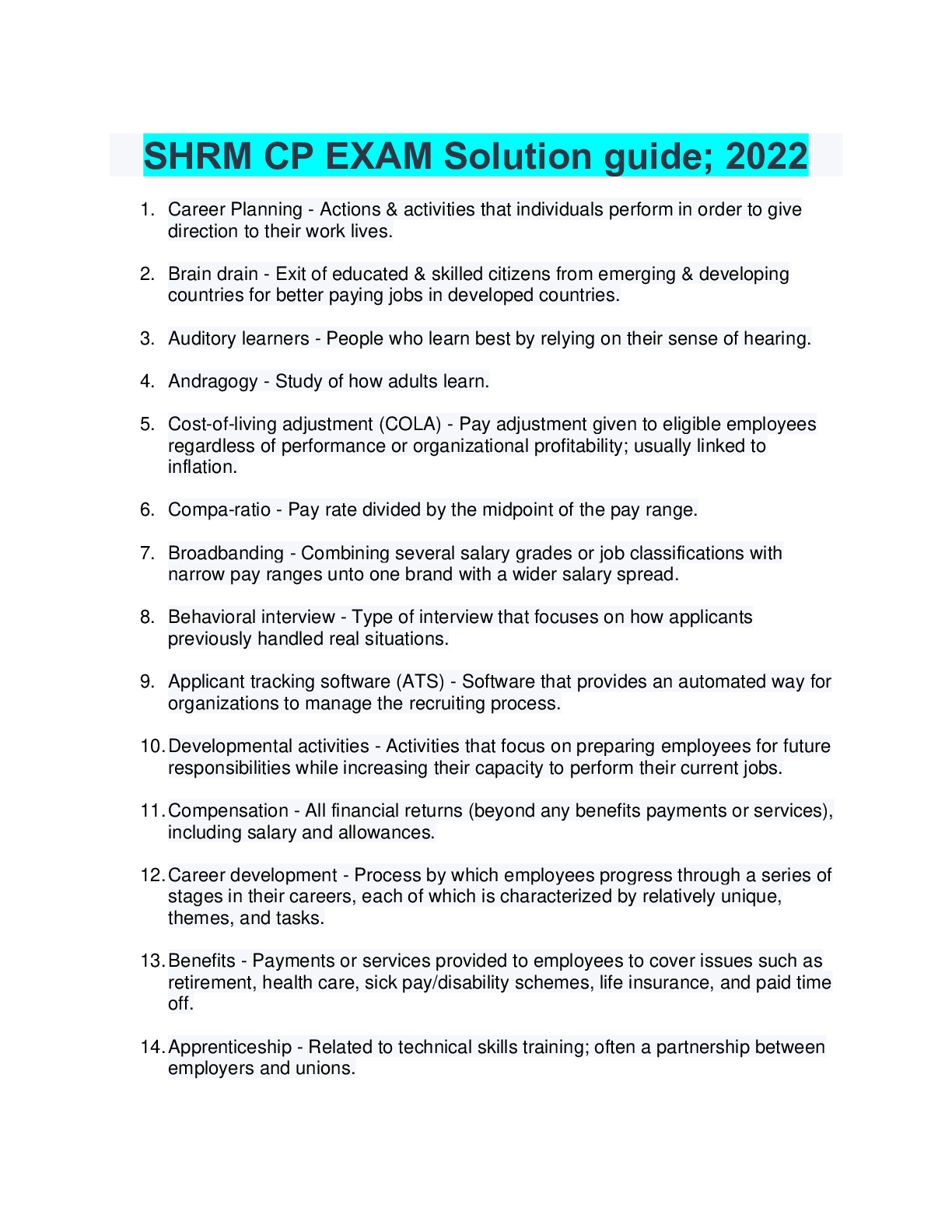
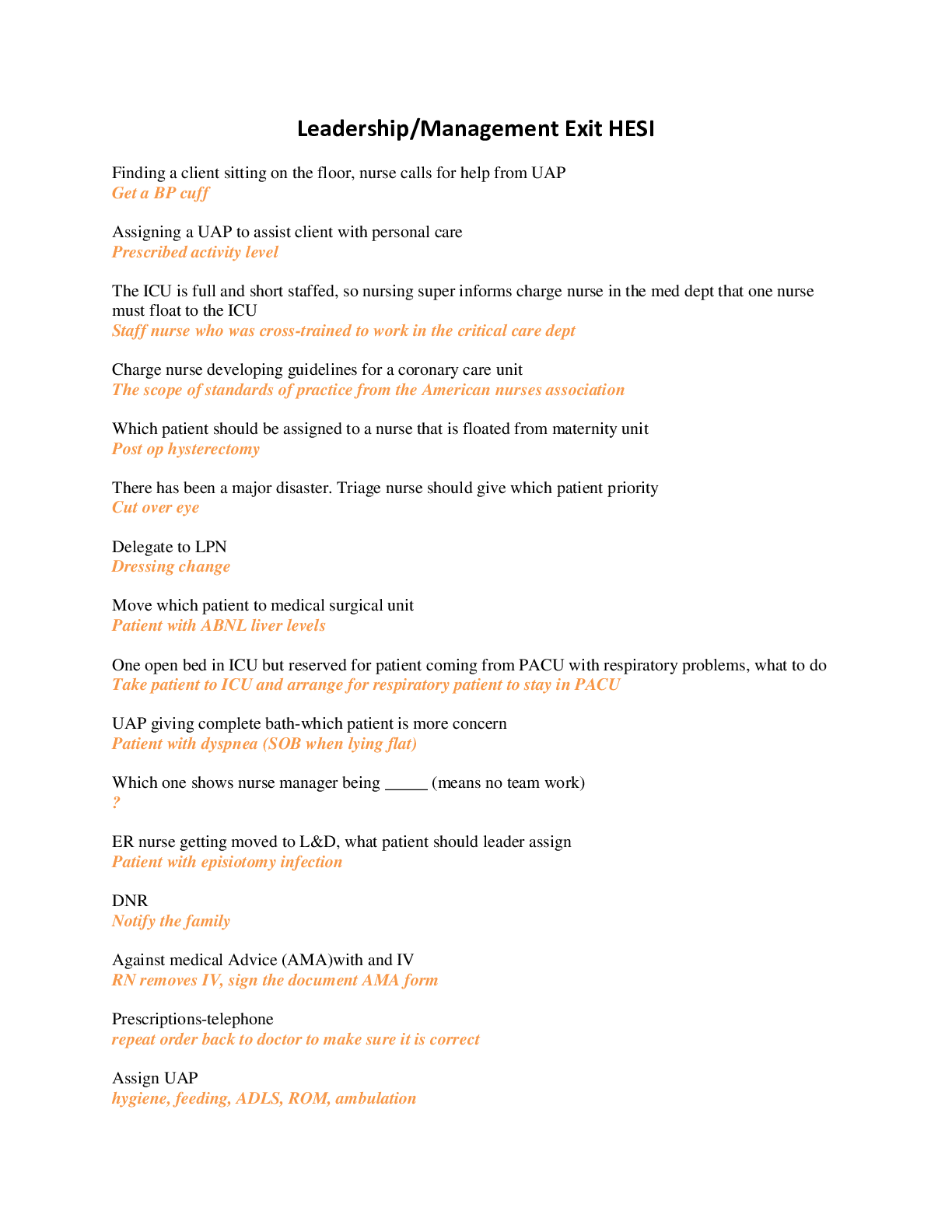
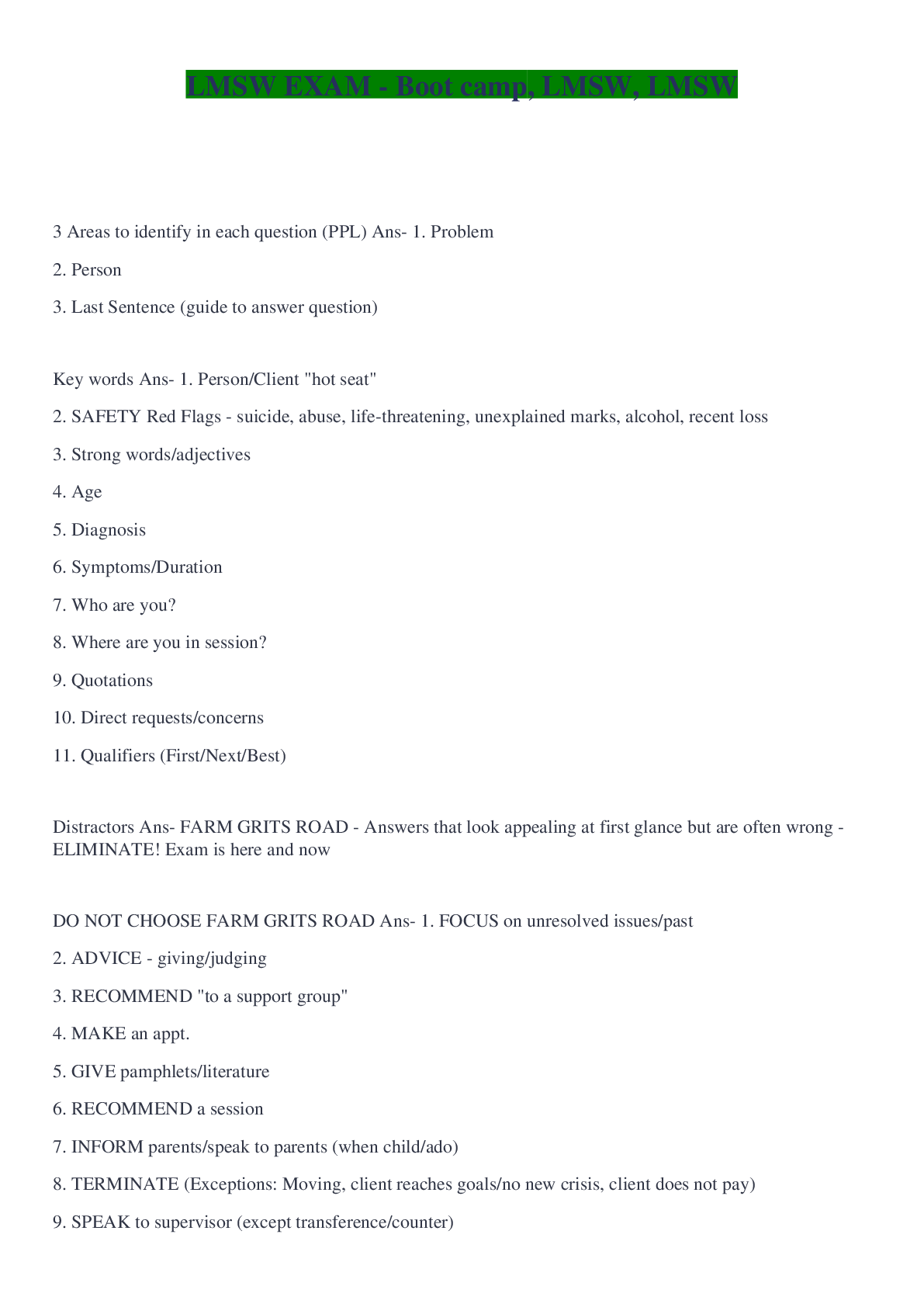

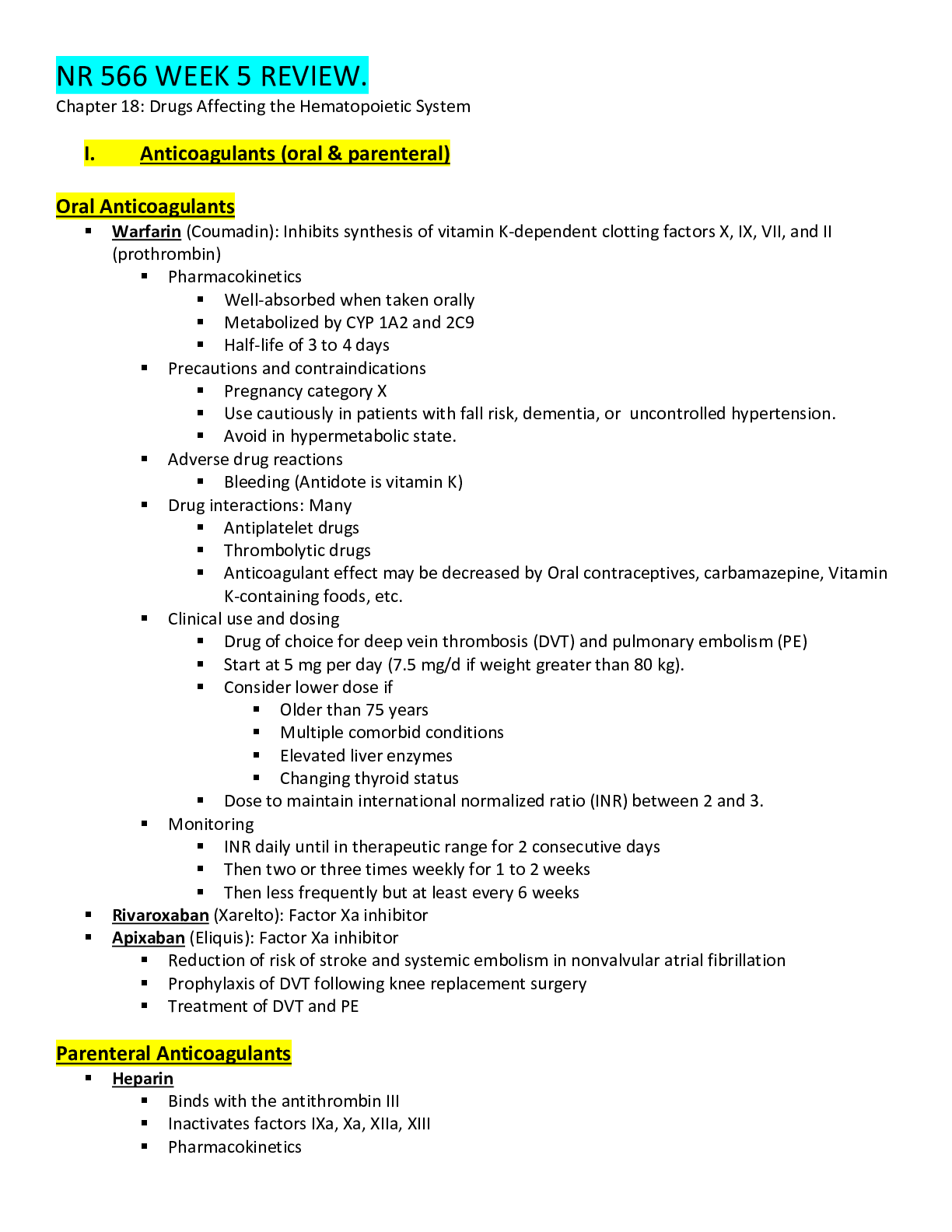
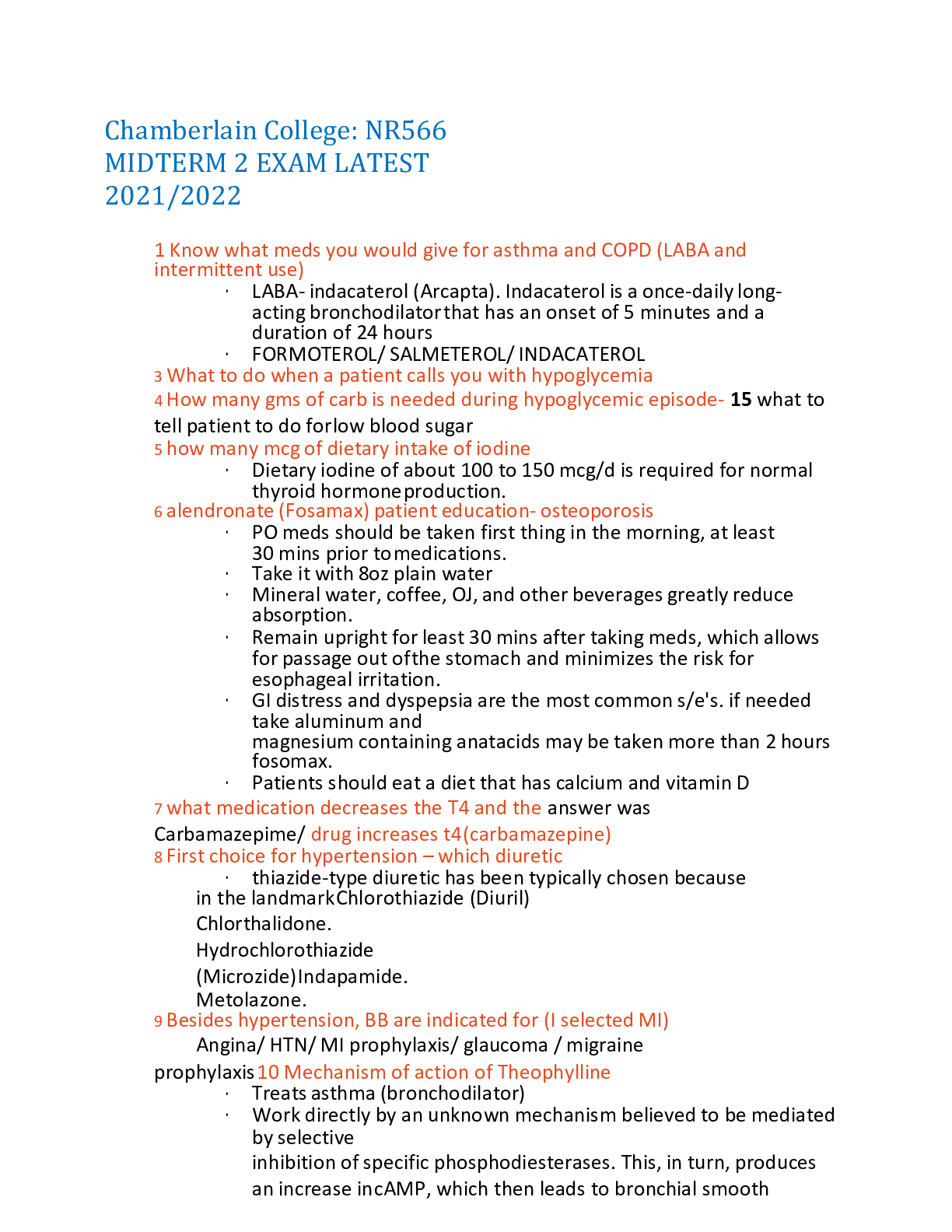
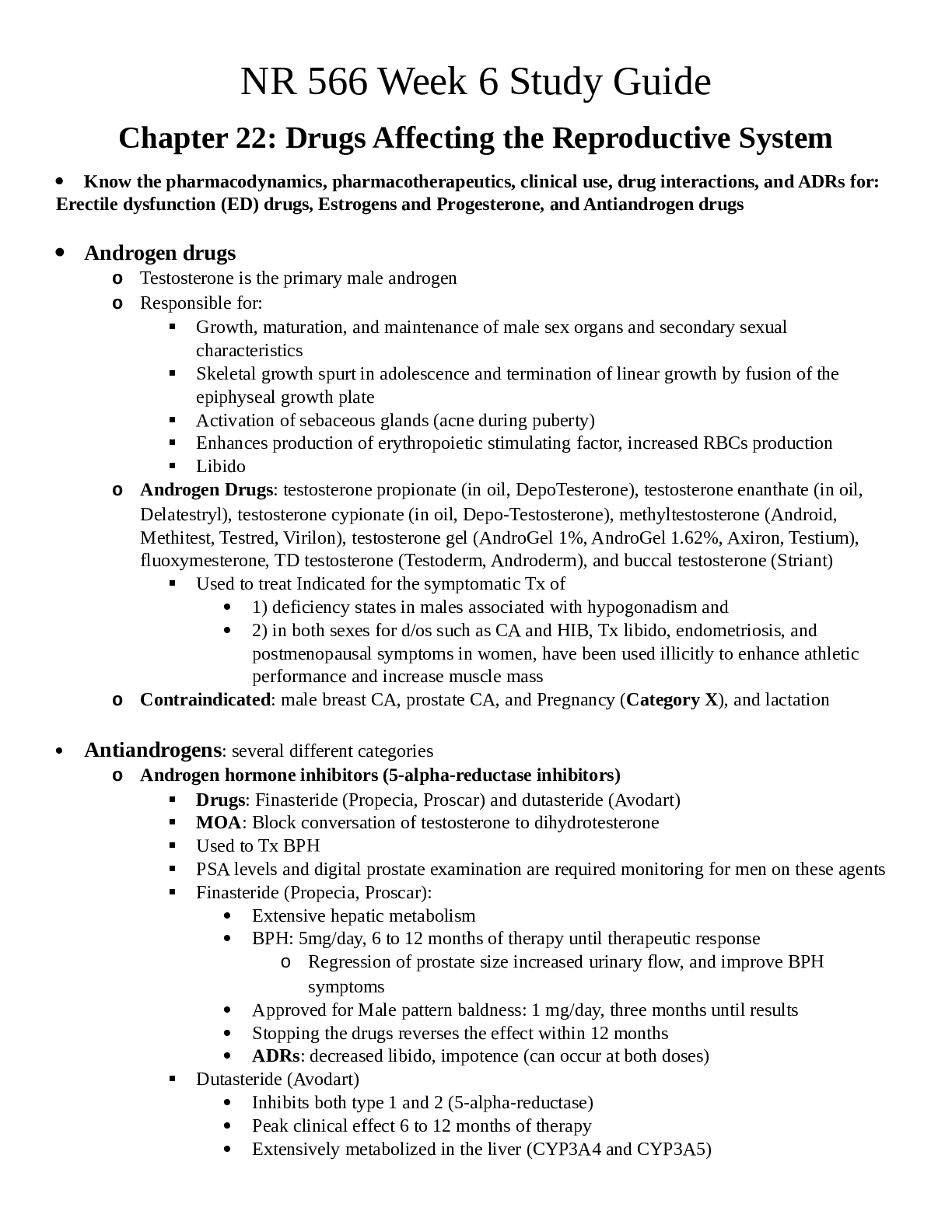
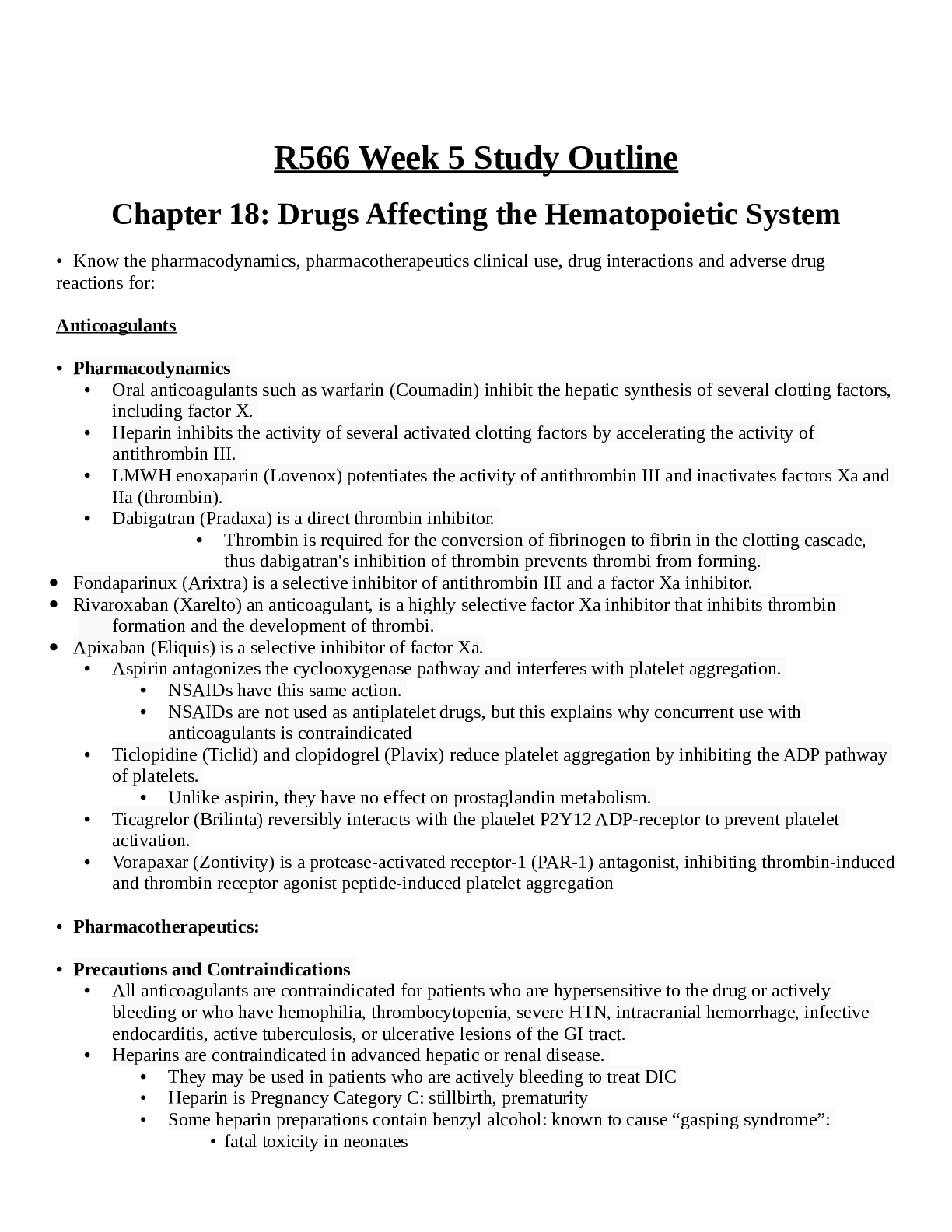
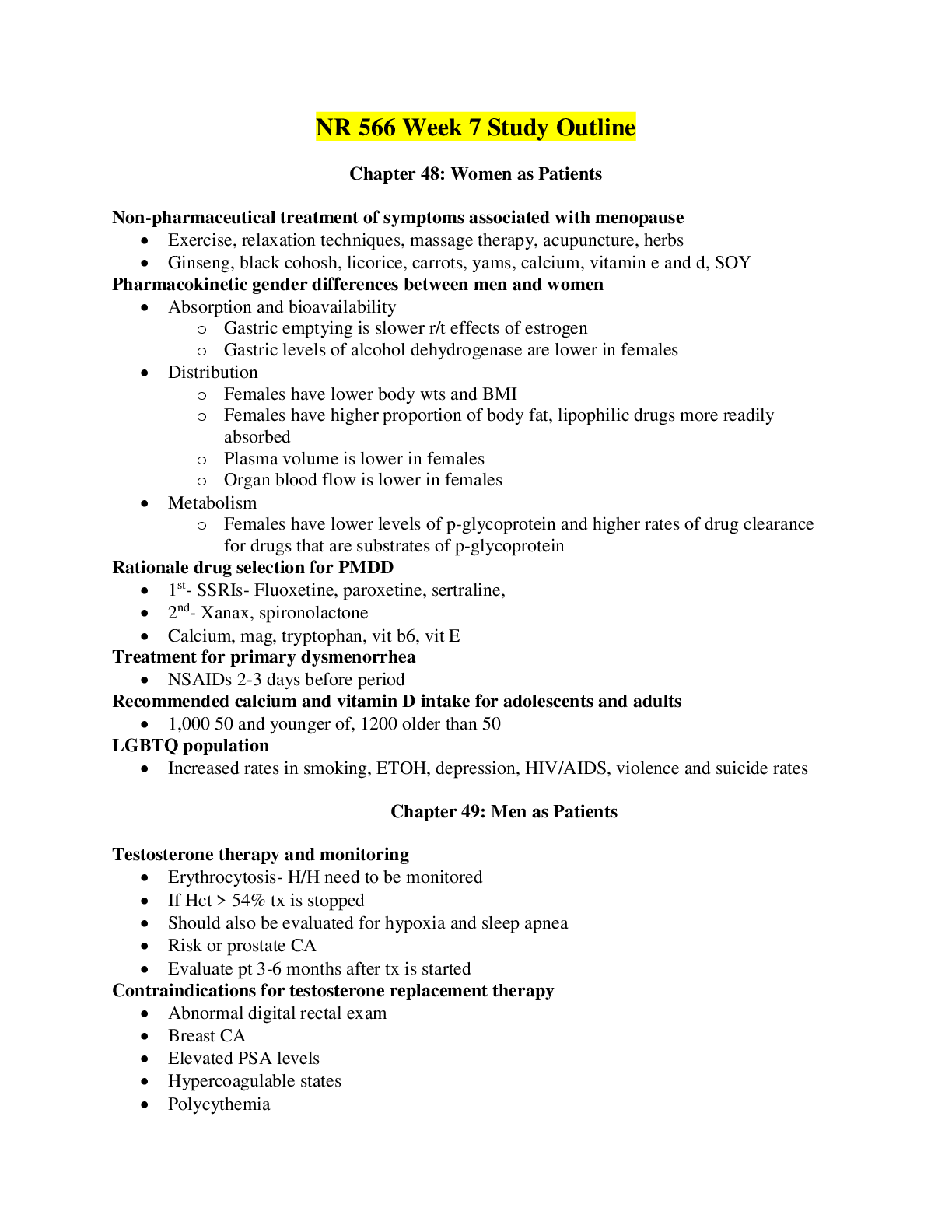

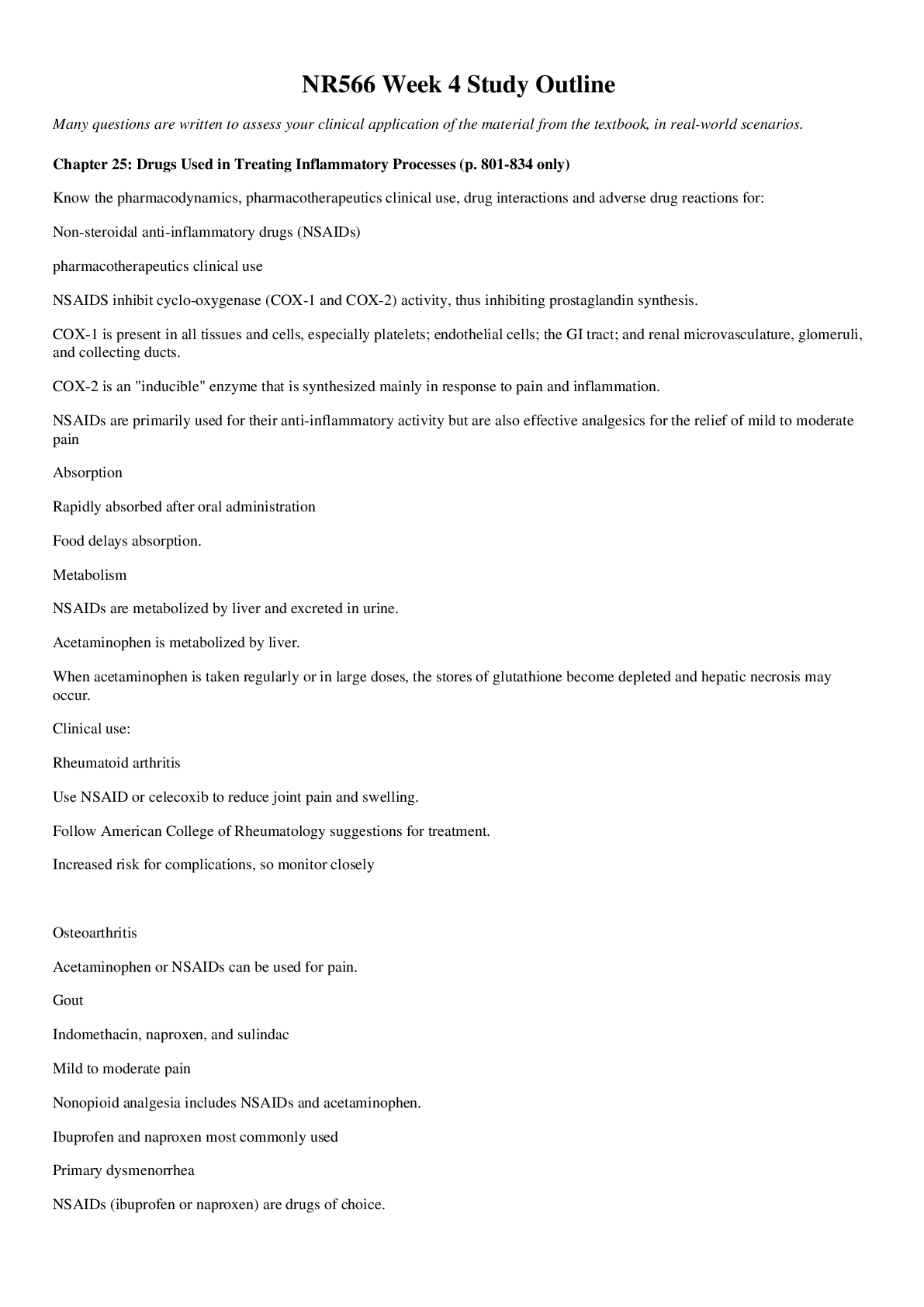
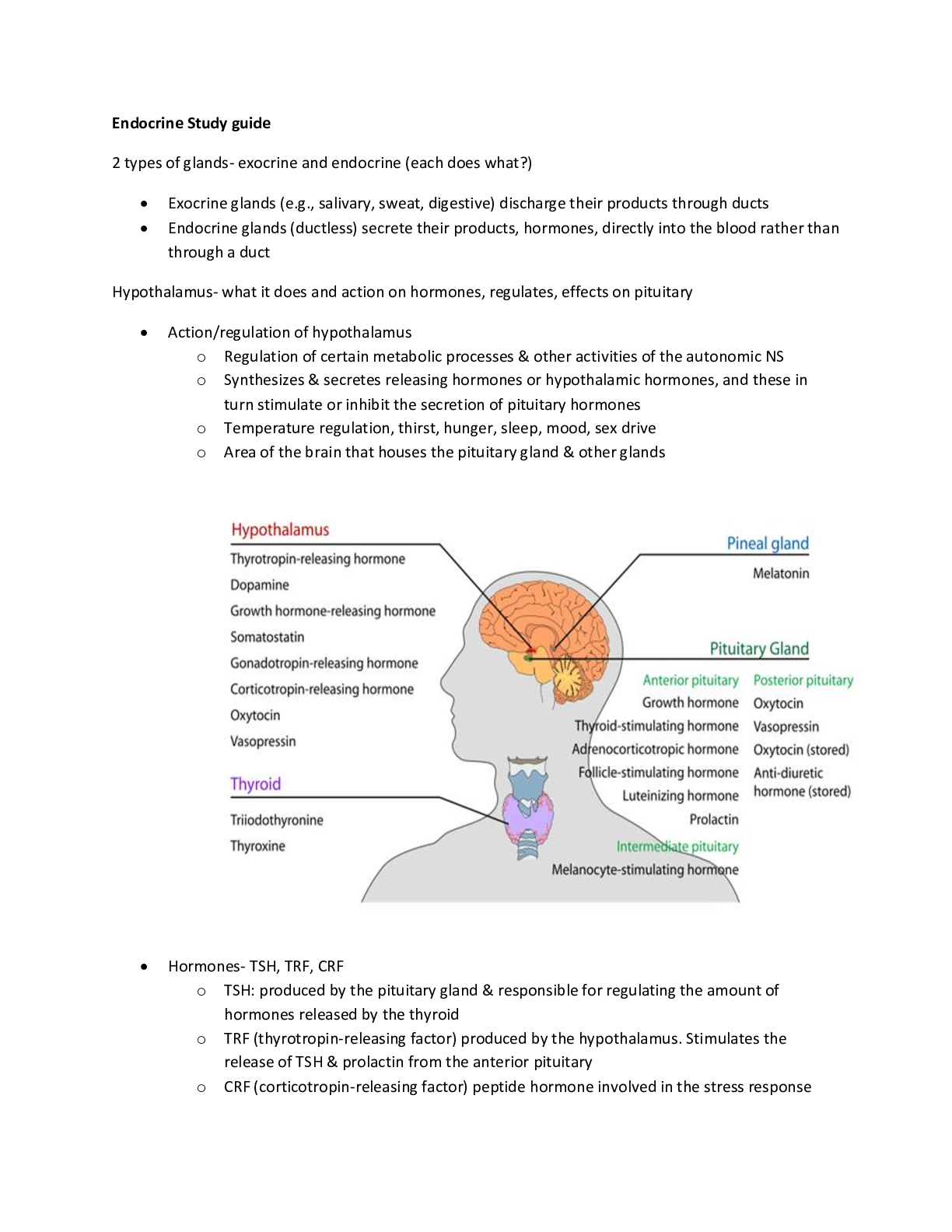
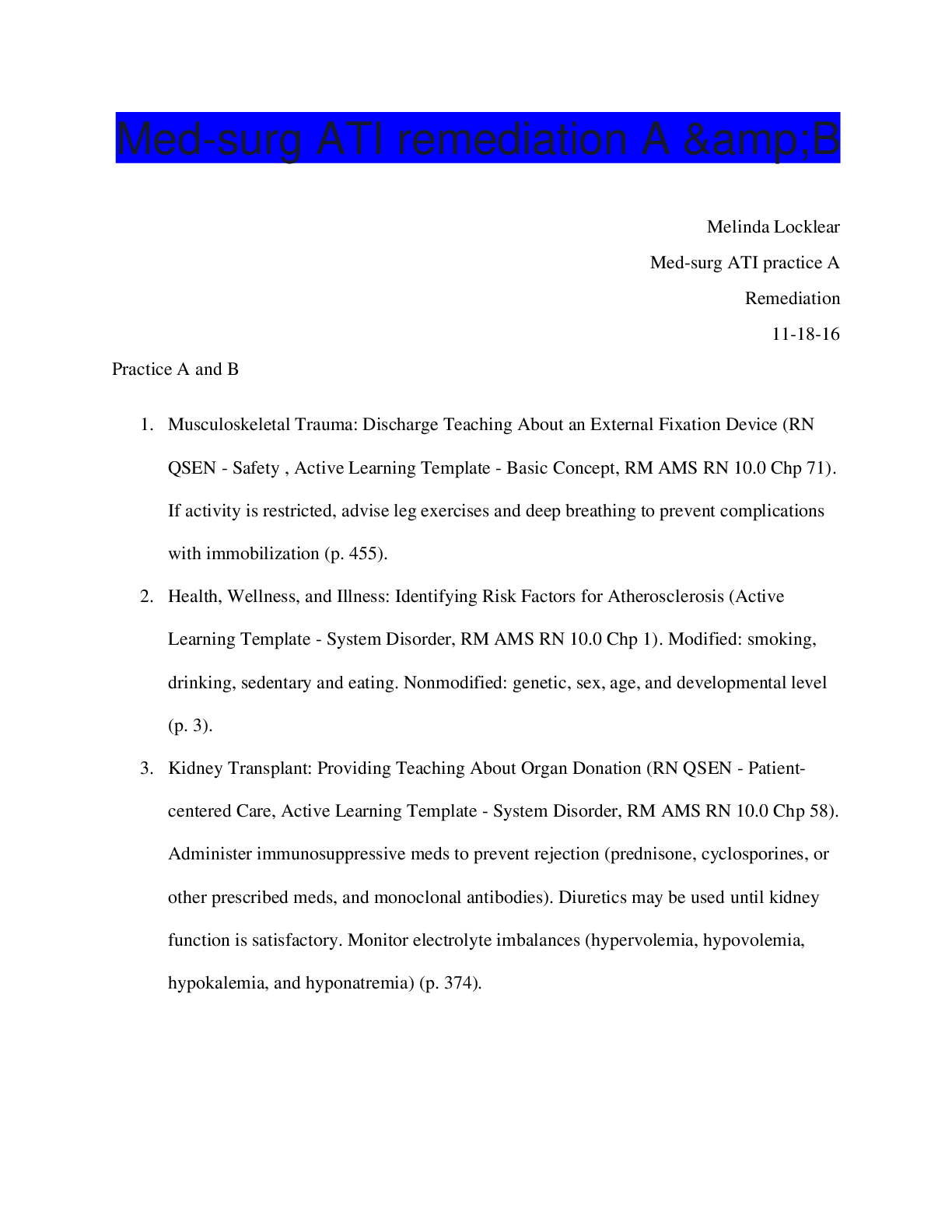







.png)

